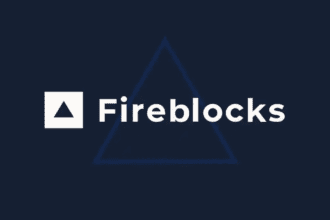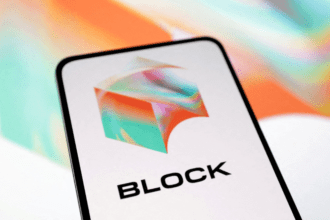Cryptocurrency mining started as something you could do on a home computer. Now, it’s a complex race involving powerful hardware and algorithms. As cryptocurrencies like Bitcoin became popular, understanding mining became more important. This guide explains the basics of crypto mining, its role in blockchain, and the challenges miners face today. Whether you’re new or just curious, this article will help you understand cryptocurrency mining.
What is Cryptocurrency Mining?
Verifying transactions on a blockchain and appending them to a common ledger is known as cryptocurrency mining. In contrast to fiat money, which is handled by a central bank, cryptocurrencies are run decentralized. Because it prevents fraud, such as spending the same money twice, creates new currencies, and defends the network, mining is vital.
Mining typically follows one of two methods:
- Proof-of-Work (PoW): In this common system, like in Bitcoin and Ethereum, miners solve tough math problems to confirm transactions. The first miner to solve the problem adds a new block of transactions to the blockchain and earns newly created coins as a reward.
- Proof-of-Stake (PoS): Instead of solving complex puzzles, validators are picked based on how many coins they have. This system uses less energy and is becoming more common in newer cryptocurrencies.
How Does Crypto Mining Work?
Mining is the process of checking and confirming transactions to keep the blockchain network safe. Let’s walk through the steps of how crypto mining works, especially in PoW systems like Bitcoin.


- Transaction Validation: When someone makes a cryptocurrency transaction, miners check if the sender has enough funds and if the transaction is properly signed using cryptography.
- Creating a Block: Validated transactions are bundled into blocks. Each block has a special code from the previous block. This keeps the blockchain safe and unchangeable.
- Solving the Puzzle: Miners compete to solve a cryptographic puzzle, which is a complex math problem. The solution to this puzzle requires trial and error, using the miner’s computational power to guess a hash that is lower than a target number.
- Adding to the Blockchain: The first miner to solve the puzzle adds a new block to the blockchain and earns cryptocurrency coins as a reward.
- Preventing Double Spending: Miners update the blockchain to make sure no one can spend the same cryptocurrency twice.
Mining Hardware: CPU, GPU, ASIC, and Cloud Mining
Different types of hardware are used for mining, depending on the cryptocurrency and the method involved.


- CPU Mining: In the early days of Bitcoin, CPU mining was common. But because mining has become harder, using CPUs no longer works for most cryptocurrencies.
- GPU Mining: A more efficient method, GPU mining uses multiple graphics cards to increase computational power. It’s commonly used for mining cryptocurrencies like Ethereum.
- ASIC Mining: ASICs are special machines made just for mining cryptocurrency. They are very powerful and work well for hard-to-mine coins like Bitcoin. However, they are expensive and quickly become outdated as mining gets harder.
- Cloud Mining: This easy method lets people rent mining power from big companies. You don’t need to buy equipment, but you pay for the service. Your rewards depend on how much power you rent.
Mining Pools: Increasing Your Chances of Success
As mining gets harder, solo miners have less chance of solving a block. That’s why mining pools exist. Miners join together, sharing their power to increase their chances of success. The rewards are split based on how much each miner contributes.
To start mining, many apps offer pool membership options. There are many trusted pools to join. Websites like CryptoCompare help miners compare pools by how profitable and reliable they are.
Challenges in Cryptocurrency Mining
While crypto mining can be profitable, it comes with several challenges:


- Pool Options: Many mining apps offer options to join pools, and there are trusted pools available. Websites like CryptoCompare help miners compare pools by profit and reliability.
- Environmental Concerns: Large mining operations, especially with PoW systems, use a lot of energy. For example, mining one Bitcoin takes about 72 terawatts of power. This has raised worries about mining’s impact on the environment. Some networks, like Ethereum, are thinking about switching to PoS to save energy.
- Mining Costs: Miners need to pay for more than just hardware. They also have to cover high electricity bills, cooling systems, and a good internet connection. In regions with expensive energy, mining can become unprofitable.
- Geopolitical Factors: Governments around the world differ in their stance on cryptocurrency mining. Some countries, like China, have banned mining, while others like the U.S. and Canada have a more favorable regulatory environment. It’s important for miners to understand the legal landscape in their country before starting.
Legal and Tax Implications of Mining
Cryptocurrency mining can have tax implications, depending on how the mined coins are used. In countries like the United States, miners are required to report the fair market value of mined cryptocurrency as income. In some cases, crypto miners may also be subject to self-employment tax.
In addition, some countries treat mining as a business activity and tax it accordingly. Make sure to check local regulations and consult a tax professional if you’re planning to mine cryptocurrency at scale.
The Future of Cryptocurrency Mining: PoW vs. PoS
As concerns grow about the environmental impact of PoW mining, many networks are switching to Proof-of-Stake (PoS). PoS uses much less energy and allows regular users to help secure the network.
Ethereum is a major cryptocurrency that has switched to PoS. More networks are likely to do the same as concerns about sustainability increase.
Conclusion: Is Crypto Mining Worth It?
Crypto mining is important for keeping networks running, but it has challenges. It can be profitable if you have cheap hardware, low-cost electricity, and a good internet connection. As mining gets harder, many miners now use cloud mining or join mining pools to compete.
The future of mining may move toward greener methods like PoS. Understanding these changes will help new miners succeed. Before starting, it’s important to research, know the costs, and stay informed about legal rules.
Join Our Telegram Free Channel for Free Crypto Singals and Charts: t.me/coinextoday









